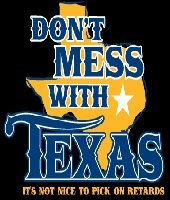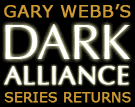|
|
 |
 |
 |
 |
register |
bbs |
search |
rss |
faq |
about
|
 |
 |
meet up |
add to del.icio.us |
digg it
|
 |

|
Basic Telecommunications #3
NOTICE: TO ALL CONCERNED Certain text files and messages contained on this site deal with activities and devices which would be in violation of various Federal, State, and local laws if actually carried out or constructed. The webmasters of this site do not advocate the breaking of any law. Our text files and message bases are for informational purposes only. We recommend that you contact your local law enforcement officials before undertaking any project based upon any information obtained from this or any other web site. We do not guarantee that any of the information contained on this system is correct, workable, or factual. We are not responsible for, nor do we assume any liability for, damages resulting from the use of any information on this site.
==========================
=BASIC TELECOMMUNICATIONS=
==========================
PART III
PREFACE:
In part III, we will discuss the dialing procedures for domestic as well as
international dialing. We will also take a look at the telephone numbering
plan.
===============================
=North American numbering plan=
===============================
In North America, the telephone numbering plan is as follows:
A) a 3 digit Numbering Plan Area (NPA) code, {ie, area code}
B) A 7 digit telephone # consisting of a 3 digit Central Office (CO) code
plus a 4 digit station #.
These 10 digits are called the network address or destination code. It is
in the format of:
Area Code Telephone #
--------- -----------
N*X NXX-XXXX
Where: N = a digit from 2-9
* = the digit 0 or 1
X = a digit 0-9
Area Codes:
-----------
Check your telephone book or the separate listing of area codes found on
many BBS's. Here are the Special Area Codes (SAC's):
510 - TWX (USA)
610 - TWX (Canada)
700 - New Service
710 - TWX (USA)
800 - WATS
810 - TWX (USA)
900 - DIAL-IT Services
910 - TWX (USA)
The other area codes never cross state lines, therefore each state must have
atleast one exclusive NPA code. When a community is split by a state line,
the CO #'s are often interchangable (ie, you can dial the same # from 2
different area codes)
TWX:
TWX (Telex II) consists of 5 teletype-writer area codes. They are owned by
Western Union. These SAC's may only be reached via other TWX machines. These
run at 110 baud. Besides the TWX #'s, these machines are routed to normal
telephone #'s. TWX machines always respond with an answerback. For
example, WU's FYI TWX # is (910) 988-5956, the corresponding real number to
this is (201) 279-5956. The answerback for this service is "WU FYI MAWA."
If you don't want to buy a TWX machine, you can still send TWX messages
using Easylink [800/325-4112 - see Tuc's and my article entitled "Hacking
Western Union's Easylink]
700:
At the time of this writing, the 700 exchange does not yet exist. AT&T
plans to use it soon though. They plan to make it a type of fancy call
forwarding service. It will be targeted towards salesmen on the run.
To understand how it works, I'll explain it with an example. Let's say
Joe Q. Salespig works for AT&T security and he is on the run chasing a phreak
around the country who royally screwed up an important COSMOS system. Let's
say that Joe's 700 # is (700) 382-5968. Everytime Joe goes to a new hotel, he
dials a special 700 #, enters a code, and the # where he is staying. Now, if
his boss received some important info, all he would do is dial (700) 382-5968
and it would ring wherever Joe last programmed it to. Neat, huh?
800:
This SAC is one of my favorites since it allows for toll-free calls.
INWARD WATS (INWATS): Inward Wide Area Telecommunications Service is the
800 #'s that we are all familiar with. 800 #'s are set up in service areas or
bands. There are 6 of these. Band 6 is the largest and you can call a band
6 # from anywhere in the US except the state where the call is terminated
(this is why most companies have one 800 # for the country and then another
for just one state). Band 5 includes the 48 contiguous states. All the way
down to band 1 which includes only the states contiguous to that one.
Therefore, less people can reach a band 1 INWATS # that a band 6 #.
Intrastate INWATS #'s (ie, you can call it from only 1 state) always have a
2 as the last digit in the exchange (ie, 800-NX2-XXXX). The NXX on 800 #'s
represent the area where the business is located. For example, a # beginning
with 800-431 would terminate at a NY CO 800 #'s always end up in a hunt series
in a CO. This means that it tries the first # allocated to the company for
their 800 lines; if this is busy it will then try the next #, etc). You
must have a minimum of two lines per each 800 #. For example, Travelnet
uses a hunt series. If you dial (800) 521-8400, it will first try the #
associated with 8400; if it is busy it will go to the next available port,
etc. INWATS customers are billed by the # of hours of calls that are made
to their #.
OUTWATS (OUTWARD WATS): OUTWATS are for making outgoing calls only. Large
companies use OUTWATS since they receive bulk-rate discounts. Since OUTWATS #
cannot have incoming calls, they are in the format of:
(800) *XX-XXXX
Where * is the digit 0 or 1 (or it may be designated by a letter) which
cannot be dialed unless you box the call. The *XX identifies the type of
service and the areas that the company can call.
Remember:
INWATS + OUTWATS = WATS EXTENDER (see part I)
900:
This DIAL-IT SAC is a nationwide dial-it service. It is used for taking
television polls and other stuff. The first minute currently costs an
outrageous 50 cents and each additional minute costs 35 cents. Bell takes in
alot of revenue in this way.
Dial (900) 555-1212 to find out what is currently on the service.
CO CODES:
---------
These identify the switching office where the call is to be routed.
The following CO codes are reserved nationwide:
555 - directory assistance
844 - time } these are now in
936 - weather } the 976 exchange
950 - future services
958 - plant test
959 - plant test
970 - plant test (temporary)
976 - DIAL-IT services
Also, the 3 digit ANI & ringback #'s are regarded as plant test and are thus
reserved. These numbers vary from area to area.
You cannot dial a 0 or a 1 as the first digit of the exchange code (unless
using a blue box). This is due to the fact that these exchanges (000-199)
contains all sorts of interesting shit such as conference #'s, operators, test
#'s, etc.
950:
[also see part I]
Here are the services that are currently on the 950 exchange:
1000 - SPC
1022 - MCI Execunet
1033 - US Telephone
1044 - Allnet
1066 - Lexitel
1088 - SBS Skyline
These SCC's (Specialized Common Carriers) are free from fortresses!
Also, the 950 exchange will probably be phased out with the introduction of
Equal Access.
Plant tests:
These include ANI, ringback, and other various tests.
976:
Dial 976-1000 to see what is currently on the service. Also, many BBS's
have a listing of these #'s.
N11 Codes:
----------
Bell is trying to phase some of these out, but they still exist in many
areas.
011 - international dialing prefix
211 - coin refund operator
411 - directory assistance
611 - repair service
811 - business office
911 - EMERGENCY
=======================
=International Dialing=
=======================
With International Dialing, the world has been divided into 9 numbering
zones.
To make an internation call, you must dial:
Int. Prefix + Country Code + Nat. #
In North America, the international dialing prefix is 011 for station-to-
station calls and 01 for operator-assisted calls. If you can dial
international #'s directly in your area then you have International Direct
Distance Dialing (IDDD).
The country code, which varies from 1 to 3 digits, always has the world
numbering zone as the first digit. For example, the country code for the
United Kingdom is 44, thus it is in world numbering zone 4.
Some boards may contain a complete listing of other country codes, but
here are a few:
1 - North America (US, Canada,etc)
20 - Egypt
258 - Mozambique
34 - Spain
49 - Germany
52 - Mexico (Southern portion)
61 - Australia
7 - USSR
81 - Japan
98 - Iran
If you call from an area other than North America, the format is generally
the same. For example, let's say you wanted to call the White House from
Switzerland. First you would dial 00 (the Swiss international dialing
prefix), then 1 (the US country code), followed by 202-456-1414 (the national
# for the White House).
Also, country code 87 is reserved for Maritime mobile service, ie calling
ships:
871 - Marisat (Atlantic)
872 - Marisat (Pacific)
873 - Marisat (Indian )
International Switching:
In North America, there are currently 7 No. 4 ESS's that perform the duty of
ISC (Internation Switching Centers). All international calls dialed from
Numbering Zone 1 will be routed through one of these "gateway cities." They
are:
182 - White Plains, NY
183 - New York, NY
184 - Pittsburgh, PA
185 - Orlando, FL
186 - Oakland, CA
187 - Denver, CO
188 - New York, NY
The 18X series are operator routing codes for overseas access (to be further
discussed with blue boxes). All international calls use a signaling system
called CCITT. It is an international standard for signaling.
For more extensive information on International dialing, especially
concering the operator routing codes, I suggest that you read Dr. Jimmy's
article on International Dialing.
|

|
 |
To the best of our knowledge, the text on this page may be freely reproduced and distributed.
If you have any questions about this, please check out our Copyright Policy.

totse.com certificate signatures
|
 |
 |
About | Advertise | Bad Ideas | Community | Contact Us | Copyright Policy | Drugs | Ego | Erotica
FAQ | Fringe | Link to totse.com | Search | Society | Submissions | Technology
|
 |
 |
 |
 |
|

